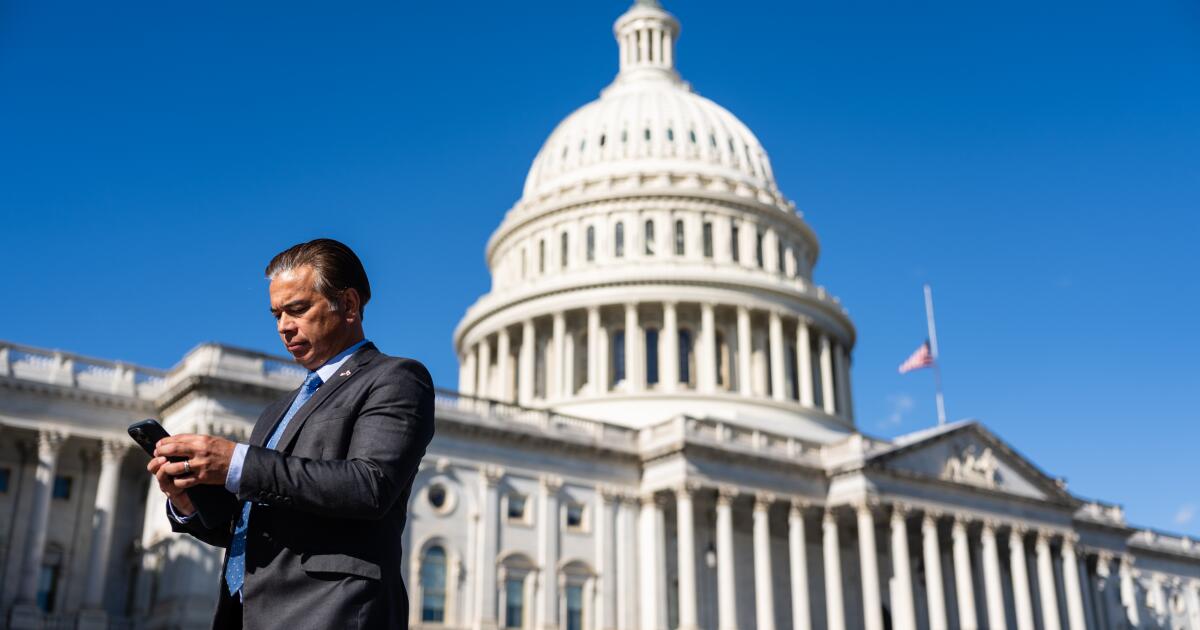The Alaska House and Senate are set to convene for a joint session Thursday at 8 p.m. to vote on whether to overturn Gov. Mike Dunleavy’s veto of around $87 million in education funding.
The joint session was seen as a victory for the House minority and the Senate majority — both of which favored a vote even if reinstating the funding is highly unlikely. House majority leaders appeared to grudgingly agree to the joint session after a nonpartisan attorney working for the Legislature said that voting on whether to overturn the governor’s vetoes could be required under the state constitution.
Megan Wallace, the Legislative Affairs Agency chief legal counsel, said it could be argued “that the legislature is constitutionally required to meet in joint session to consider a veto,” despite an ongoing practice by lawmakers not to do so.
The Alaska House narrowly voted against convening a joint session on Tuesday, the first day of the legislative session, in a 20-20 split, with all House Republicans in the majority caucus voting against a joint session. But minority members vowed to keep trying until the Saturday deadline for a veto override, and Rep. Rebecca Himschoot, I-Sitka, again made a motion to convene a joint session on Thursday.
The stakes for the joint session are high: Alaska schools across the state say they are facing a budget crisis. The Legislature approved last year $175 million in one-time education funding, but Dunleavy — a Republican and former educator — vetoed half that funding with little public explanation.
The legal memo, quoted on the House floor by minority member Rep. Andy Josephson, D-Anchorage, appeared to change the conversation on the necessity of a joint session, leading Republican lawmakers to pause the floor session and convene several hours of caucus meetings and closed-door conversations with leadership of the Senate.
The bipartisan Senate majority was largely seen as in favor of the joint session, and in favor of overturning the governor’s education funding veto.
After five hours of closed-door meetings, the House reconvened and agreed to call a joint session at 8 p.m. the same day. House Speaker Cathy Tilton, a Wasilla Republican who has said she opposes the veto-override vote, called the joint session without bringing it to a vote by the chamber.
“With much deliberation amongst our caucus members and in consultation with the (legislative) legal attorney, our caucus had made a decision that we would go into the joint session. It doesn’t mean that anybody’s votes change,” Tilton said in an interview.
“We took an oath to uphold the constitution, so we want to be sure that we’re doing that,” Tilton added.
Lawmakers in both chambers have proposed their versions of legislation to permanently increase funding for Alaska’s schools, and some legislators have said the focus should be on the permanent legislation, rather than the one-time funding boost. But supporters of the veto override have said schools need the financial help immediately while a permanent solution is worked out.
Alaska has the highest bar in the nation for overturning a governor’s veto. Three-quarters of lawmakers in each chamber must vote in favor of an override to undo a governor’s veto. While the Senate could reach that threshold, it is unlikely to be reached in the House, where a larger share of seats are held by Republicans who support Dunleavy’s agenda.
Some lawmakers have said a vote on the governor’s veto is significant — even if unlikely to be undone — because it will signal to Alaskans where lawmakers stand on education spending, which is expected to be a key issue in the current legislative session.
During the joint session, lawmakers will also have the opportunity to vote on overturning Dunleavy’s vetoes of two other bills. Those bills — because they are not related to the state’s spending plan — require only a two-thirds threshold for an override.
In July, Dunleavy vetoed legislation intended to deregulate electric bike use in Alaska, which passed the Legislature in a bipartisan 57-2 vote. In August, Dunleavy vetoed a bill aimed at minimizing the use and spill risk from harmful chemicals that exacerbate climate change and can poison drinking water. That bill also passed with broad support, with 58 lawmakers in favor.
The last time lawmakers met to consider a veto override was four years ago, in early 2020, when they failed to muster the votes needed to reinstate $74 million that Dunleavy had cut from Alaska’s state budget the previous year.
Dunleavy has regularly used the veto pen to trim — or in some cases slash — funding items from the state’s spending plan. Lawmakers have often proceeded without voting on whether to overturn those vetoes, recognizing that to do so is so unlikely due to the threshold written into the state constitution.
But the legal memo prepared this week indicates that the state constitution may require lawmakers to meet — regardless of how futile the vote may be.
The Alaska constitution states that “bills vetoed after adjournment of the first regular session of the legislature shall be reconsidered by the legislature sitting as one body no later than the fifth day of the next regular or special session of that legislature.”
In the memo, the legislative attorney said that “a court could decide that the legislature has a constitutional obligation to convene a joint session for the purpose of allowing individual legislators and both houses the opportunity to vote upon each veto.”
But she said that “a court may also be disinclined to interfere with legislative procedure on separation of powers grounds. Ultimately, a court would likely uphold the past practice of the legislature to not automatically take up all vetoes.”

:quality(70)/cloudfront-us-east-1.images.arcpublishing.com/adn/ZNCKLXBG4FB6FK36M2ONRFFVXQ.JPG?ssl=1)


:quality(70)/cloudfront-us-east-1.images.arcpublishing.com/adn/23I5V5YVDFAXXPJS4CVUSEUGTY.JPG?w=400&resize=400,240&ssl=1)
:quality(70)/cloudfront-us-east-1.images.arcpublishing.com/adn/23I5V5YVDFAXXPJS4CVUSEUGTY.JPG?w=80&resize=80,80&ssl=1)
:quality(70)/cloudfront-us-east-1.images.arcpublishing.com/adn/FMYTEWOGCJE3RFLOPYH5OYXKXA.JPG?w=400&resize=400,240&ssl=1)
:quality(70)/cloudfront-us-east-1.images.arcpublishing.com/adn/FMYTEWOGCJE3RFLOPYH5OYXKXA.JPG?w=80&resize=80,80&ssl=1)



























